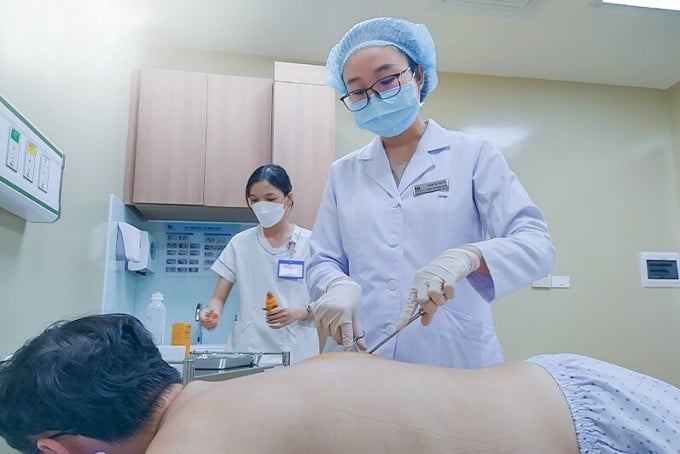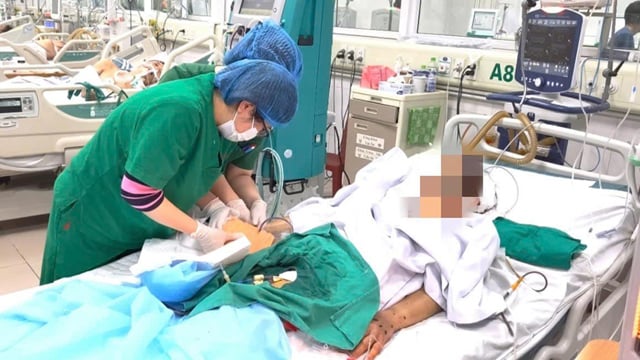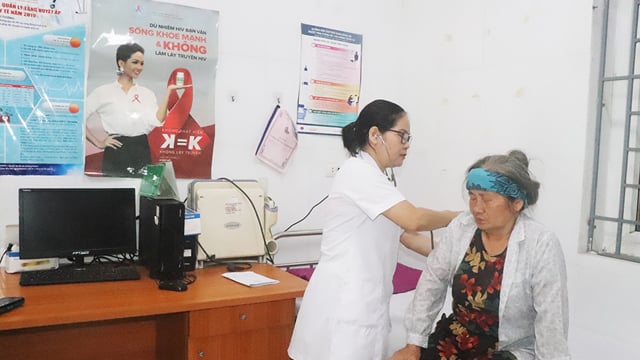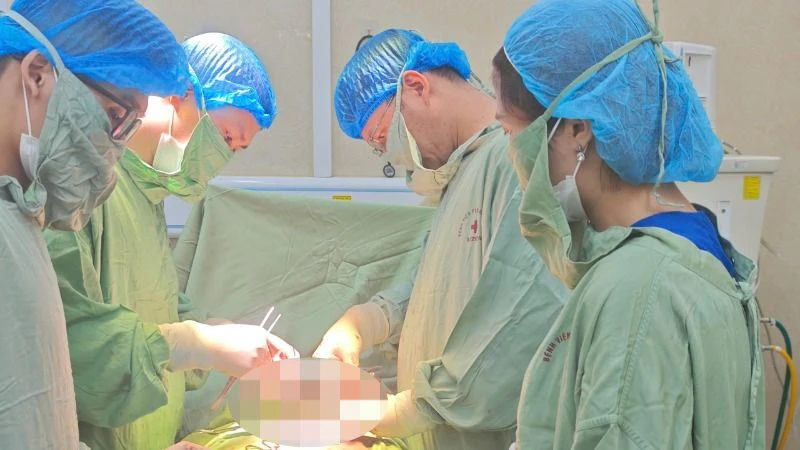Ho Chi Minh City Anh Dung, 35 years old, has had diabetes for 4 years, has boils on his back that have turned into an infected, necrotic area.
Mr. Dung has had diabetes for more than 4 years and has been hospitalized many times due to hyperglycemia and ketosis (increased acid in the blood).
This time, he went to Tam Anh General Hospital in Ho Chi Minh City for emergency treatment with fever, fatigue, and severe back pain. The inflammation on his back was 20 cm in diameter, as big as an orange, oozing pus and blood, and the surrounding skin turned purple-red.
A week before being admitted to the hospital, the initial inflammation was a pimple the size of a peanut. He took antibiotics and applied medicine himself, then the pimple became red and swollen, causing pain and fever. Test results upon admission showed blood sugar of 400 mg/dL (normal for a normal person is 70 - 100 mg/dL), high blood ketone levels of 2.94 mmol/L (normal index is 0.03 - 0.3 mmol/L).
Dr. Dinh Thi Thao Mai, Department of Endocrinology - Diabetes, said that Mr. Dung had diabetes, back abscess, skin infection, hyperglycemia, and ketoacidosis (increased acid in the blood). If left untreated, the patient's infection could become necrotic, spread to the chest cavity and surrounding tissues, leading to sepsis and multiple organ failure. If not treated promptly, ketoacidosis can lead to coma and death.
Mr. Dung was given IV fluids, his blood sugar was controlled with insulin, and the infection was treated with antibiotics. The doctor drained the pus from the infection, removed necrotic tissue, and prevented it from spreading throughout his back. After two days, his blood sugar stabilized, the wound was less swollen and painful, and a negative pressure suction machine was placed on the patient to help the wound heal quickly.

Doctor takes care of Mr. Dung's wound. Photo: Dinh Tien
Back abscess is an infection that can cause sepsis and blood sugar metabolism disorders. Poor resistance and high blood sugar in diabetics are favorable conditions for skin and muscle infections, leg ulcers, and sepsis.
Dr. Mai said that in addition to soft tissue infections, diabetics are susceptible to foot ulcer complications with an annual incidence rate of about 2%. The amputation rate due to foot ulcers in diabetic patients is 60%, and the 5-year mortality rate in diabetic patients with amputations is 50-60%.
Diabetics need to control their blood sugar well and take medication as directed by their doctor. They should eat less starch, limit sweets, sugar, fast food, processed foods, and not drink alcohol or smoke.
Eat plenty of green vegetables, whole grains, and exercise at least 30 minutes a day. People with diabetes need to have regular health check-ups and do HbA1c tests (evaluating blood sugar levels over three months) at least twice a year.
Dinh Tien
| Readers ask questions about endocrine diseases - diabetes here for doctors to answer |
Source link



![[Photo] Summary of parade practice in preparation for the April 30th celebration](https://vstatic.vietnam.vn/vietnam/resource/IMAGE/2025/4/11/78cfee0f2cc045b387ff1a4362b5950f)
![[Photo] Prime Minister Pham Minh Chinh chairs meeting to discuss tax solutions for Vietnam's import and export goods](https://vstatic.vietnam.vn/vietnam/resource/IMAGE/2025/4/10/19b9ed81ca2940b79fb8a0b9ccef539a)
![[Photo] Phuc Tho mulberry season – Sweet fruit from green agriculture](https://vstatic.vietnam.vn/vietnam/resource/IMAGE/2025/4/10/1710a51d63c84a5a92de1b9b4caaf3e5)



























































































Comment (0)